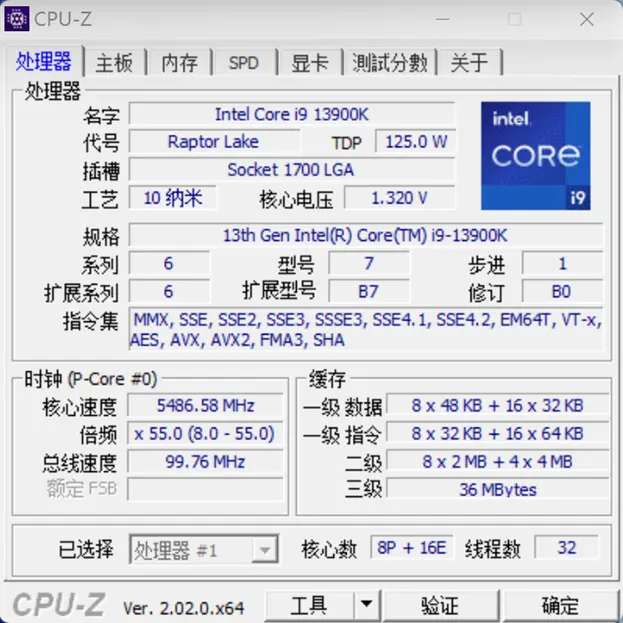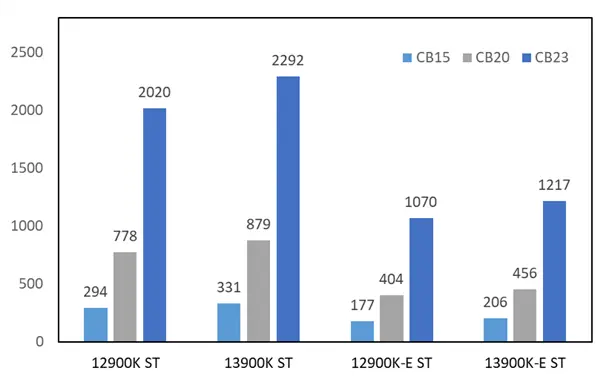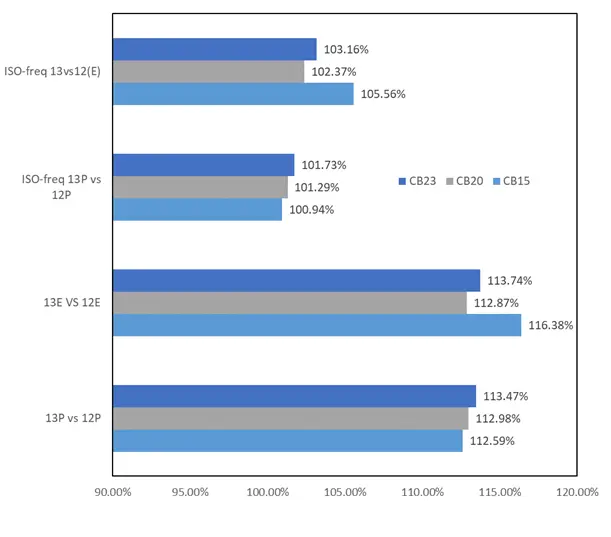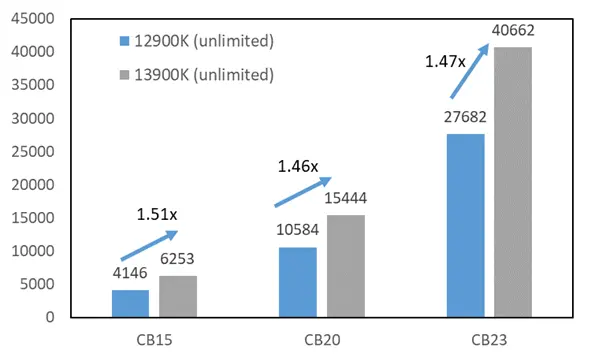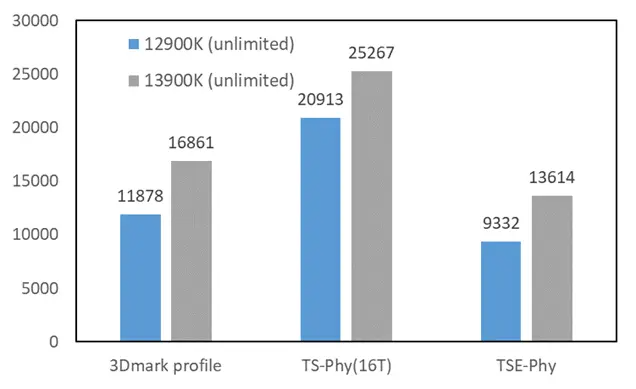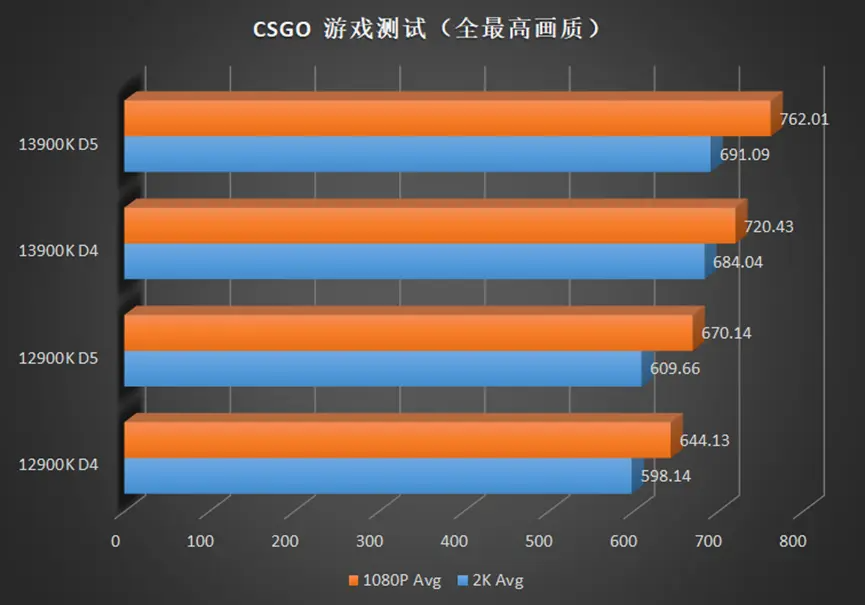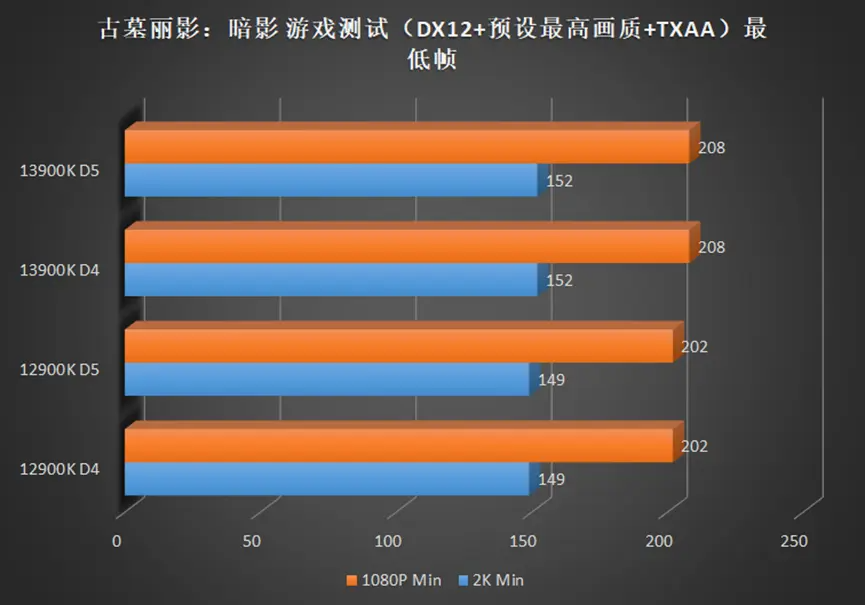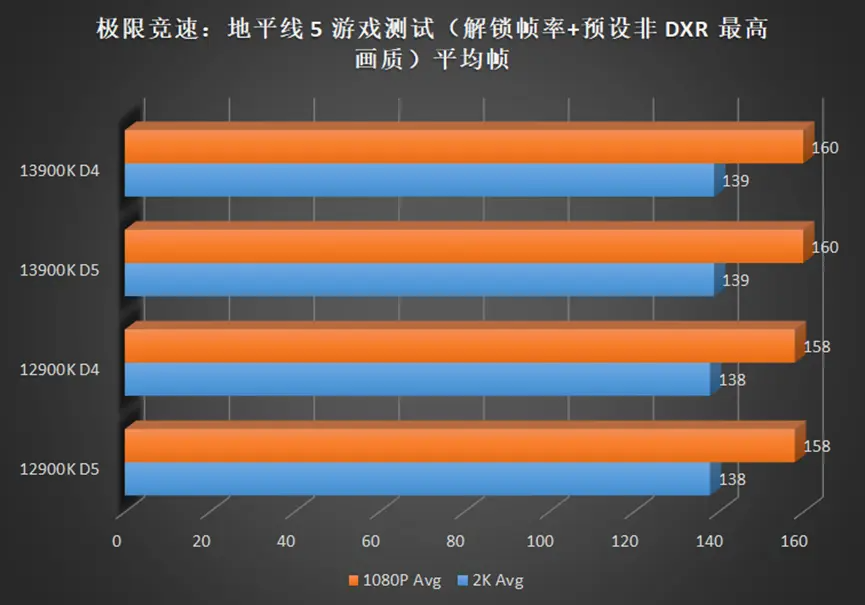An early look at Raptor Lake's architectural changes and performance gains over Intel's 12th Gen Alder Lake design on completed CPU hardware thanks to an early Intel Core i9-13900K retail review on Bilibili.
According to the assessment, Intel's design strategy for Raptor Lake was to boost both frequency headroom and multi-threaded performance by doubling the E cores and enhancing the architecture's L2 and L3 cache performance. But, starting with core frequencies, the Core i9-13900K outperforms its predecessor, the Core i9-12900K, with a 5.8 GHz peak boost on cores 1 and 2, and a 5.5 GHz peak turbo boost clock on cores 3-8. Similarly, the E cores improved significantly, rising from 3.7 GHz on the Core i9-12900K to 4.3 GHz on the Core i9-13900K despite core counts tripling from 8 to 16 concurrently.
Intel has also enhanced the ring bus, according to the reviewer, to assist improve access times between cores. When the E cores were more active than the P cores in Intel's Alder Lake architecture, the ring bus dropped 3600 MHz. The ring bus on the Core i9-13900K, on the other hand, now runs at more over 4600 MHz. This little but critical adjustment reduces core-to-core communication latency to about 30-33 ns across all 24 cores, with exceptions. The core latency figures for Alder Lake are about 30-33 ns for eight cores and 35-40ns for the remainder.
On the P cores, the Core i9-13900K has a 5-11% latency improvement in the L1, L2, and L3 caches when compared to the Core i9-12900K. In comparison, the E cores show a significantly larger 16-18% gain in benchmarks examined.
Furthermore, due to Raptor Lake's larger L2 and L3 cache capacities, latency improves for longer, since each test may now stay in the L2 or L3 cache for longer. Raptor Lake achieves this latency gain through two methods: the first is due to Raptor Lake's frequency enhancements to the cores, and the second is because cache performance remains substantially unchanged when frequency is removed from the equation.
It is advantageous since increasing cache capacity generally directly influences cache latency. However, we do not believe this conduct is appropriate for Raptor Lake. The lone exception to the latency reductions is the L3 cache, which has a little of additional delay at the L3 test's edges. However, the E cores perform similarly to, if not better than, Alder Lake in terms of L3 cache performance, and they see a latency decrease. Bandwidth has been greatly increased, however this is dependent on the demand. In single-threaded tests on the P cores, for example, read speed improves by 12.5% with the L1 cache. Everywhere else, including the E cores, performance is the same between the two architectures. However, in multi-threaded applications, cache bandwidth increases from 11% to 44%. The reviewer attributes this to huge pure L3 cache bandwidth increases resulting from increased association up to 12 way vs. 10 way.
Raptor Lake Perf
In Cinebench R15, R20, and R23, the Core i9-13900K outperformed the Core i9-12900KF with the P cores exclusively in the single-threaded test by 12.5%. However, when tested with the E-cores, the Core i9-13900K outperforms the Core i9-12900K by 16% in single-threaded performance, but only by 12% in the other Cinebench versions. Multi-threaded performances were considerably better, with the Raptor Lake component improving by 48% on average across all three Cinebench versions. Furthermore, in all other tests done by the evaluation, including 7z decompression, compression, cryptography, 3DMark, and others, the Core i9-13900K was 41% quicker than the Core i9-12900KF.
The reviewer also ran pure IPC tests with a 3.6 GHz frequency lock. They achieved a 12% IPC gain for the P cores over the Core i9-12900KF and a 6% improvement for the E cores. Gaming testing were also carried out in a variety of titles, including Ashes of the Singularity, CSGO, and others. Overall, the Core i9-13900K outperformed the Core i9-12900KF by 10% or more.
Raptor Lake is a considerable advance over Alder Lake in practically every manner, assuming this reviewer's data is correct. It enables a generational leap in most areas without the need to upgrade to a newer Intel node. These enhancements can be ascribed to increased L2 and L3 cache density, lower latency, increased bandwidth, and more frequency headroom. Not to mention the addition of twice as many E cores as Alder Lake.
However, we must emphasize that these are extremely early Raptor Lake findings; they may or may not be correct, but we must take them with a grain of salt for the time being until further third-party evaluations become available around Raptor Lake's October 20 release date. Be aware that this review was published far earlier than the actual launch date of October 20.
Core i9-13900K Early Review Indicates Significant Improvements in Comparison to the Core i9-12900K

